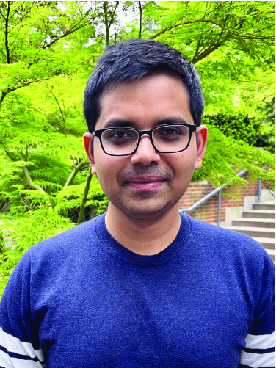Technology-assisted Learning and Programming Pedagogy in Geoscience Education

Dr. Pritwiraj Moulik
Associate Research Staff – Princeton
Department of Geosciences
Host: Dr. Rafael Almeida
Wednesday, April 19, 2023
1 pm – CSL 422
Abstract
Geoscience departments are responsible for educating young minds about vital issues like natural resources, climate change, earthquakes, and other natural hazards. The core idea of a geoscience course is to use our planet as the key component for elucidating the universal crosscutting scientific concepts such as those of energy & matter. Along the way, more advanced topics such as planetary thermodynamics, structural geology, petrology, and sedimentology, are introduced. In Fundamentals of Solid Earth Science, we adopted a quantitative and computational way of learning these geoscience concepts through Python programming and Jupyter Notebooks. Programming tools were utilized in interactive components and computational workflows during all three components of the course – lectures, field trips and problem sets. During lectures, several interactive components were used – Who am I? or Mine me, blackboard, and classroom activity. For example, a classroom activity involved a tactile or programming demonstration, such as on fault mechanics and pore pressures. Field trips introduced the entire cycle of design, acquisition, processing, modeling and interpretation of data. For example, on a geophysical field trip along the Delaware-Raritan Canal, students tied their smartphones to ice hockey sticks and a wooden dump truck to find and characterize a magnetic dike. Students were exposed to concepts in data science and signal processing, such as the procedure of stacking to amplify the signal of a magnetic anomaly. A geological field trip in New Jersey was coupled with an industrial site visit to GeoExchange boring wells; data from both were analyzed to explore the geologically informed efficacy of the engineering design. A problem set extended classical geological concepts of identifying the clast size distribution and mineral identification for rock classification using image processing and cluster analysis in Python. These activities allowed students to see the practical application of a programming approach and learning within a group promoted teamwork and individual progress. Several students had no prior programming experience but learnt about its utility as they modified our codes and learnt from tutorials to answer the problem sets. Technology-assisted learning tools are critical for improving retention of geoscience concepts through interactive components, for introducing computational workflows through programming, and for improving accessibility to education worldwide, especially during unforeseen situations like a pandemic.

